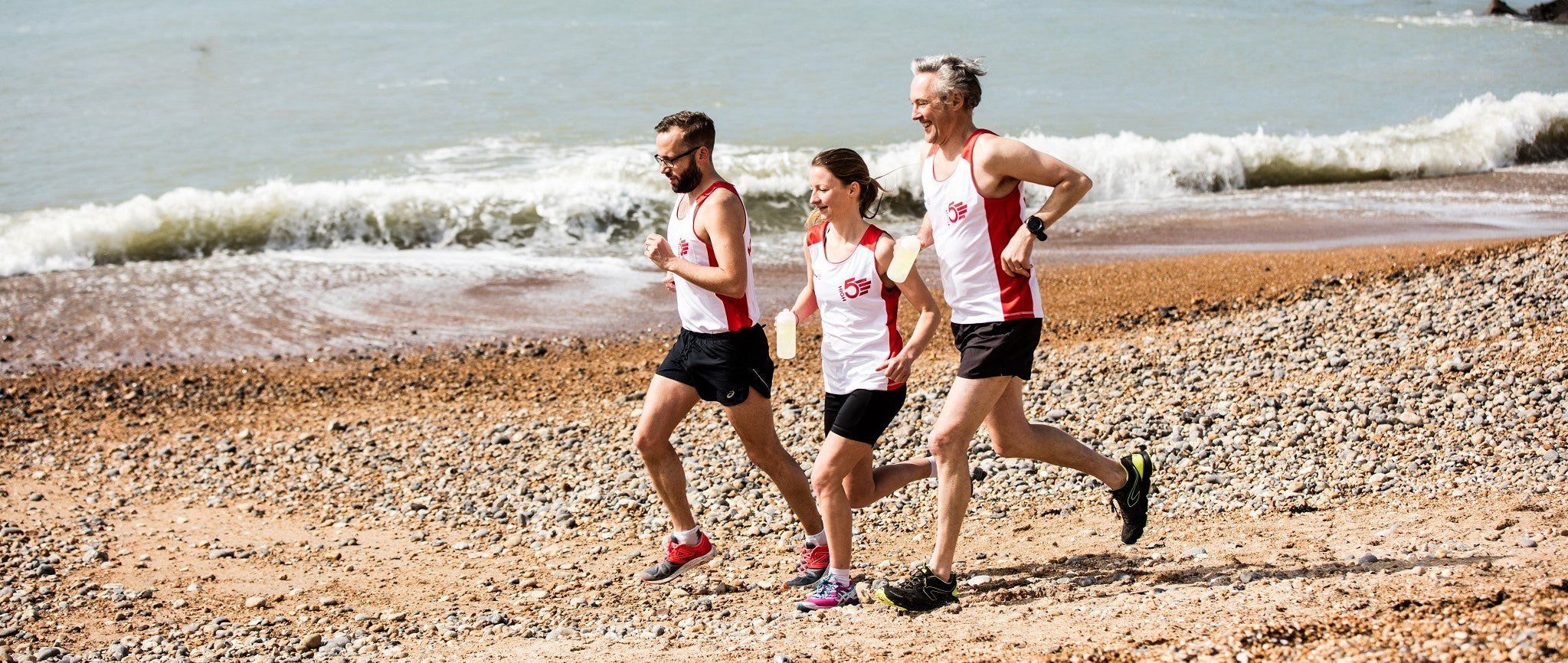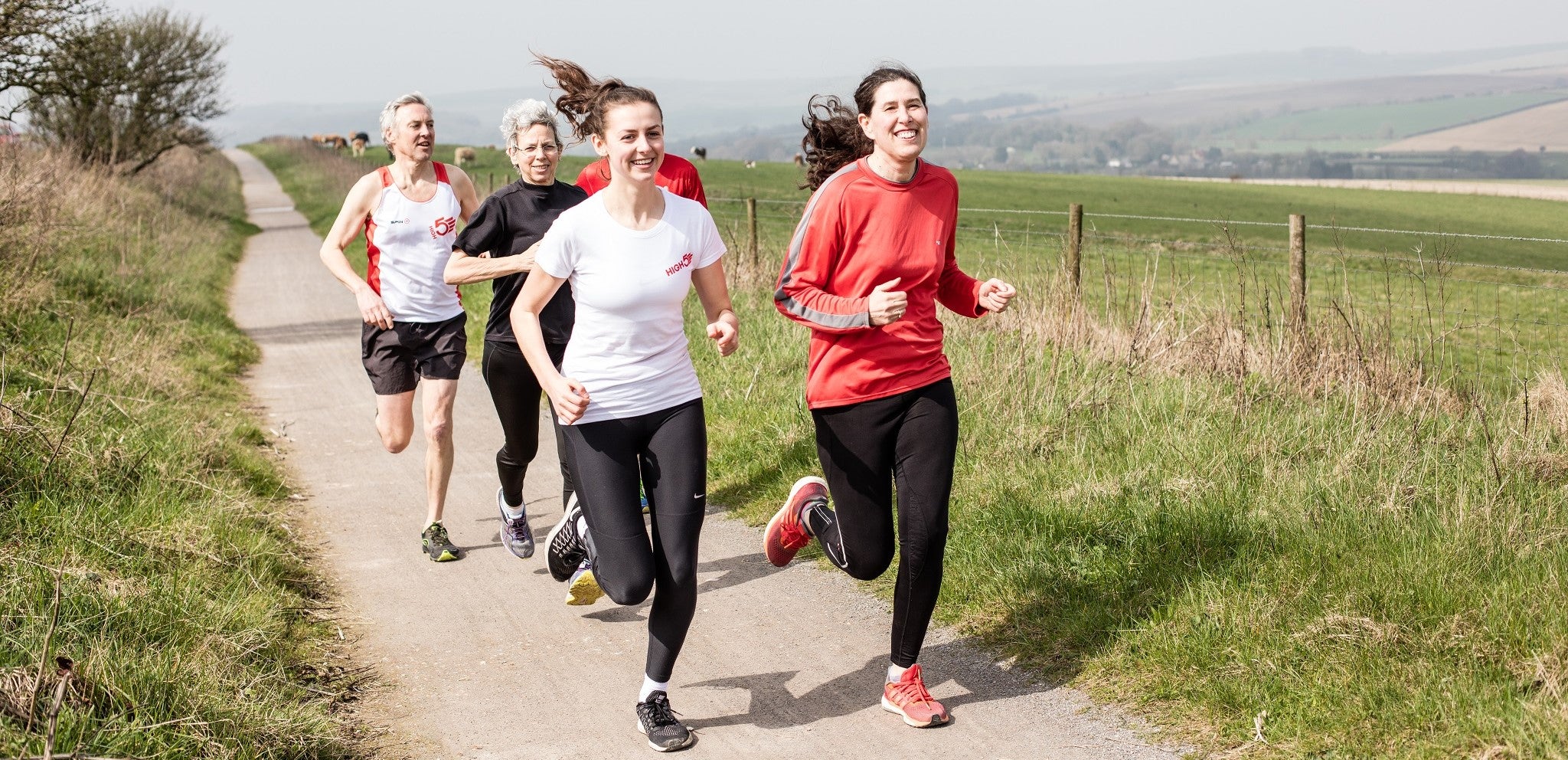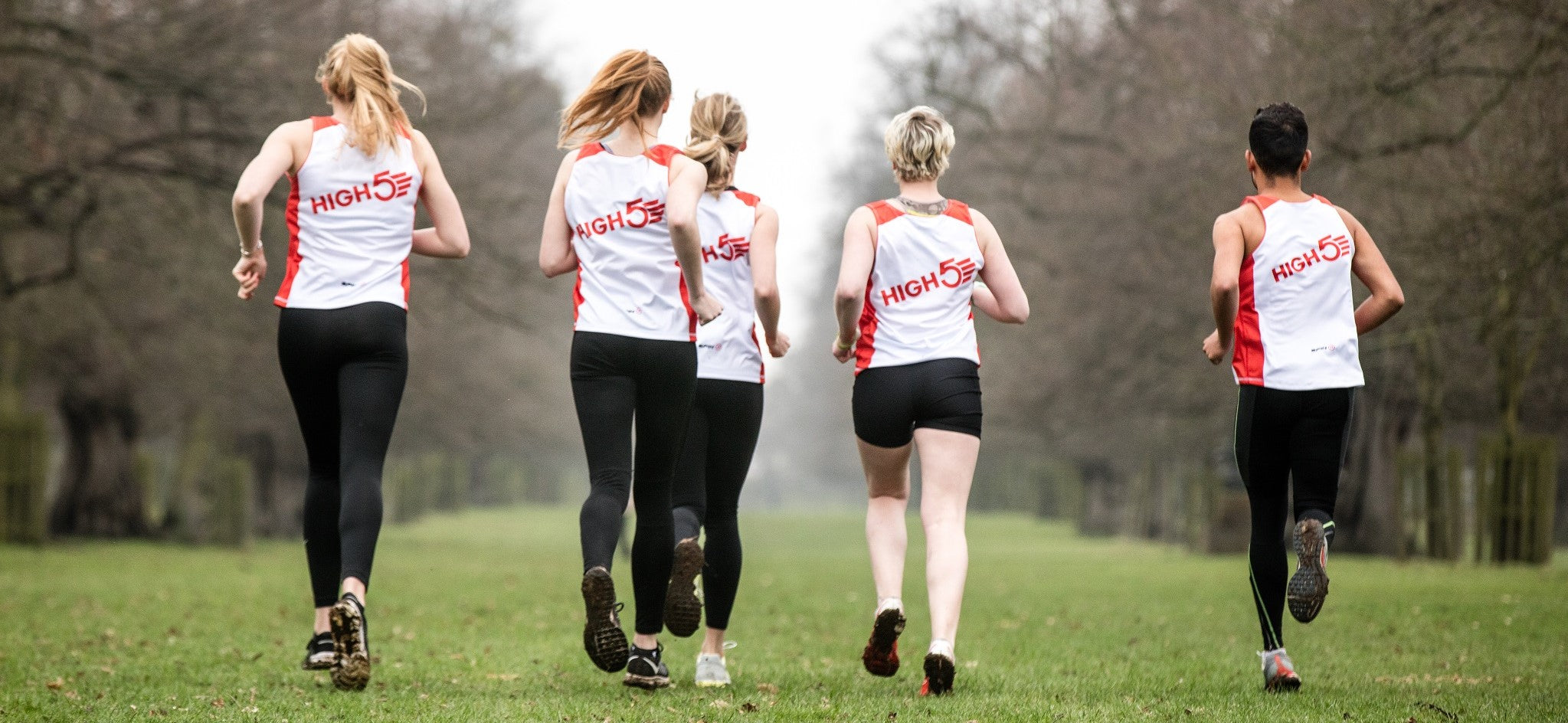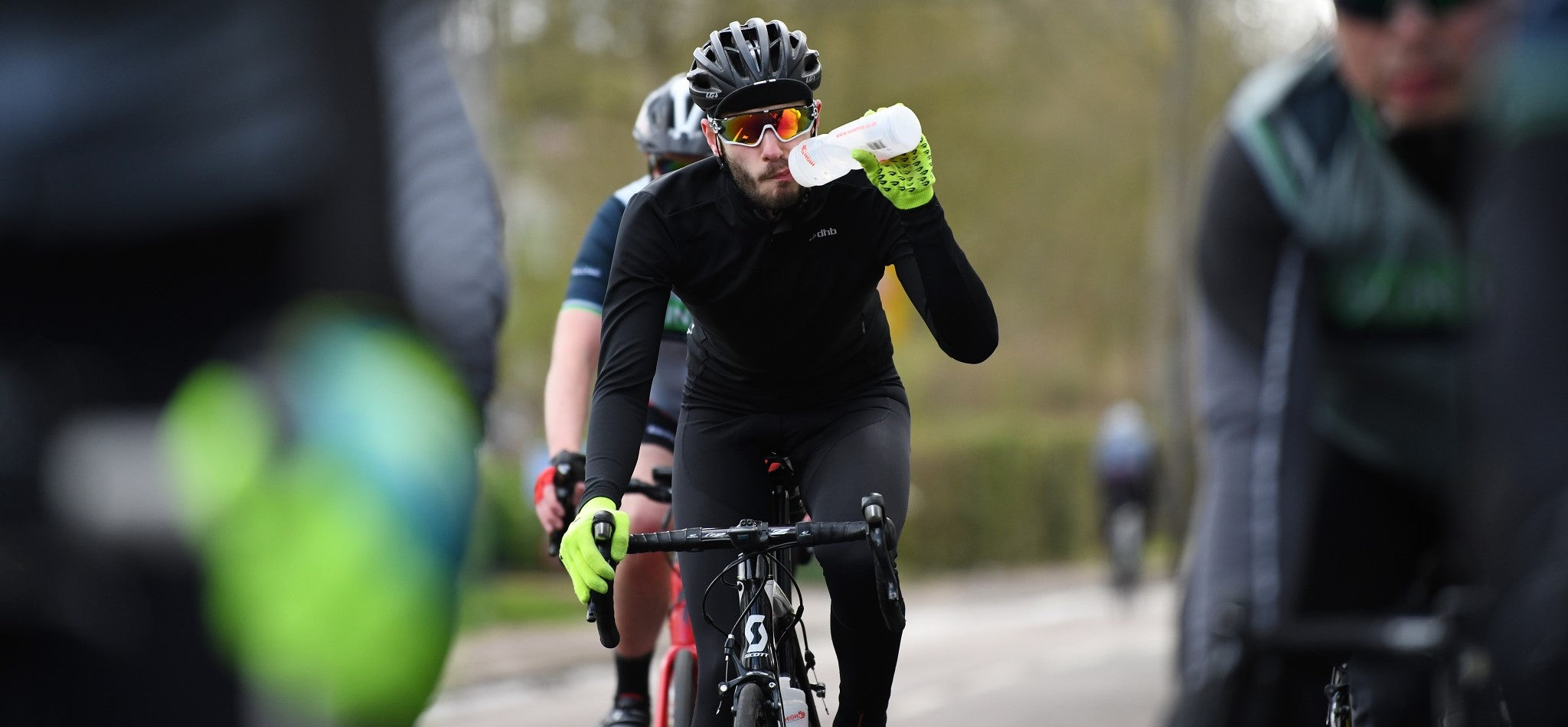For lots of endurance sportsmen and women, lower levels of body fat equate to better performance. Andrew Hamilton explains the nuts and bolts of fat burning and how you can manipulate your training to burn more fat…
Introduction to fat burning
Although increased fat burning has beneficial implications for sport performance, many people who exercise regularly do so for general fitness, health and aesthetic reasons rather than to increase fat burning per se. So if you wander into almost any gym and ask people why they train or what spurred them to begin training, it’s hardly surprising that weight loss comes right at the top of the list!
Any exercise programme that promotes increased fat burning therefore can help you to reach and maintain your target body weight more easily, bringing you all the associated health and kudos benefits sooner rather than later. Together, these facts explain why there’s such an interest in fat burning and how to maximise it during exercise.

Fundamental facts
Before we get into the nitty-gritty of maximising fat burning, it’s important to understand that the fundamental laws of chemistry and physics still apply (see box 1) and there’s absolutely no way of ignoring them.
- If you want to lose weight, you have to create a ‘negative energy balance’ in your body – i.e. expend more calories than you consume. However, by enhancing fat burning, you increase the proportion of your expended calories that will come from stored body fat.
- All of us, all of the time, are burning all three types of food calories (fat, carbohydrate and protein) to produce energy. The contribution from protein is minimal except when vigorous exercise is performed in the absence of carbohydrate (a subject we’ll discuss in part II of this article) so in actual fact, most of your energy is derived from carbohydrate and fat. It follows therefore that increasing the proportion of your expended energy from fat is associated with a reduced proportion from carbohydrate and vice-versa. You can think of it as a kind of seesaw effect.
- If maximising fat burning is desirable, aerobic/ endurance type exercise is important. This includes jogging/running, cycling, swimming, rowing, skipping, X-country skiing etc. which should form the basis of any exercise programme. That’s because during aerobic type exercise, energy is provided by combining carbohydrate, fat and (to a small extent) protein calories with oxygen. The role of oxygen is especially important here because:
1. There’s an unlimited supply in the air around you and even a lean body contains a very large amount of stored chemical energy in the form of body fat. Providing you don’t exercise so vigorously as to ‘run out of puff’ (ie oxygen), you can continue to exercise for long periods without fatiguing, which helps you burn a lot of calories in total;
2. Unlike carbohydrate (the other main fuel for the body), fat needs an abundant supply of oxygen in order to be converted to energy. Provided your exercise intensity isn’t too severe (ie you have enough oxygen flowing around your body), you can derive a large proportion of energy throughout this aerobic exercise from fat.
Very high-intensity exercise like sprinting or lifting weights (resistance training) uses different metabolic pathways to produce energy, most of which comes from carbohydrate burning. This is why it’s not an effective way to burn fat, although some resistance training can enhance a weight loss programme by helping to sustain or increase muscle mass (see later).

The fundamental laws of fat burning
Body fat can be thought of as form of stored chemical energy. Each pound of body fat contains approximately 3500kcals of energy, so to lose a pound of body fat over any given time period, you have to burn 3500kcals more energy than is contained in the food and drink you consume. This can be achieved either by increasing your energy expenditure (ie by training/exercising more), or reducing your calorie intake (eg by following a calorie restricted diet), or, even better, by a combination of the two. Although there seems to be a small degree of genetic variability that makes the process of fat burning somewhat easier in some individuals than others, these fundamental laws of chemistry and physics (energy in versus energy expended) are immutable.However, while you can’t overcome the laws of thermodynamics, the good news is that by manipulating your exercise intensity/duration and food intake/timing, you can increase the proportion of your expended energy that is derived from fat burning, which (as we will see) can yield significant benefits.
Exercise intensity
One of the most powerful ways to manipulate the proportion of fat used to produce energy is to adjust the intensity of your exercise. The question that follows therefore is how hard should your aerobic training be to maximise fat burning? As we’ve hinted above, lower intensities favour fat burning but as the intensity increases, carbohydrate becomes more and more important until at very high intensities, almost all of the energy to fuel exercise comes from carbohydrate burning and none from fat-burning.

Figure 1 shows some actual data gathered from recreational cyclists. You can see that that as the exercise intensity (in watts) increases, the rate of fat burning increases, reaching a maximum of around 35 grams per hour at 180 watts. Above 180 watts, the amount of fat burned drops off rapidly so that by 300 watts, it’s contributing virtually nothing. Carbohydrate burning increases steadily too but at around 180 watts (just as fat burning drops off) it jumps dramatically so that by 300 watts, it’s contributing 100% of the energy for exercise.

Don’t rule out high intensity exercise!
You might think that exercising exactly at your Fatmax intensity is the best way to lose body fat but this may not necessarily be the case. There are a number of reasons for this:
Larger total calorie burn – suppose you exercise at 60% of your maximum heart rate (MHR) for an hour, burn 500 calories and 50% of those come from fat then you’ll have burnt 250 fat calories. But now suppose you exercise at 75% MHR for an hour and burn 700 calories (because you’re working harder). Even if only 33% of your energy comes from fat, you’ll still have burnt 230 fat calories but in total, you’ve also burnt an extra 200 calories from other fuels (mostly carbohydrate). This means that you’ll have an extra 200 calories to play with in terms of food intake and still stay the right side of the thermodynamic equation for the day (remember, you have to create a negative energy balance).
Increased fitness and fat burning – Training at a higher % of your MHR will progressively increase your aerobic fitness; in very simple terms, as time goes by you’ll be able to train harder and burn more calories per hour for less perceived effort. Even more importantly, by increasing your oxygen processing capacity, your muscle cells will become more efficient at using fat for energy, even at higher intensities. This explains why someone who is fit finds it relatively easy to stay lean. For example, a fit runner who can sustain 16kmh (10mph) can easily burn 1000kcals in an hour. If they can do that while working at say 75% of MHR, they’ll probably derive something in the region of 400-500kcals from fat. But suppose you’re only ever used to working at 60% MHR. This kind of intensity presents little challenge to the aerobic system, so there’ll be relatively little improvement in aerobic fitness. With a total calorie burn of around 400-500 per hour and a maximum of around 50% from fat, it’s unlikely you would burn more than 200 fat calories in an hour. Of course, you could achieve the same fat calorie burn as our fit runner by doubling the length of your workout, but quite apart from the boredom, most people simply don’t have time for 2-hour workouts, and you still wouldn’t be improving aerobic fitness at these lower intensities.
Increased resting metabolic rate – as mentioned earlier, some resistance training can be a very useful adjunct to an aerobic training programme for fat loss. This is because very high intensity exercise such as resistance training increases muscle mass, which is a very desirable thing. Kilo for kilo, muscle mass is metabolically far more active than adipose (fat) tissue. Increasing your muscle mass with the addition of some resistance training means that the rate at which you burn up energy even while resting can be boosted significantly, helping you to achieve your negative energy balance more easily. The best way to maximise lean muscle mass is to add one or two sessions of resistance training into your weekly aerobic exercise program. You don’t need to spend hours at the gym either; very significant benefits can be had by as little as two 30-minute resistance sessions per week. Sessions comprising of 10-12 exercises designed to work all the major muscle groups (one to two sets of 10-15 repetitions per exercise with enough weight set so that the repetitions can only just be completed) will produce good results in those who are not experienced resistance trainers.

Fatmax
Although several studies have looked at the relationship between exercise intensity and fat oxidation at a particular intensity, it was only recently that this relationship has been studied over a wide range of exercise intensities (2). In general terms, what happens is that carbohydrate oxidation increases proportionally with exercise intensity, whereas the rate of fat oxidation initially increases but decreases again at higher exercise intensities (see figure 2). The point at which fat burning reaches its peak is known as ‘Fatmax’ and the range of exercise intensities close to Fatmax is sometimes referred to as the ‘Fatzone’.

It’s often claimed that you have to exercise at low intensities to burn fat, but you can see from the graph this is not necessarily true. The right hand side of the grey Fatzone is quite vigorous but still close to Fatmax. Another important point to emphasise is that your fitness level will have a big impact on the exercise intensity at which you reach Fatmax.
In a series of studies conducted by Professor Jeukendrup and his team of researchers at the University of Birmingham, it was found that for trained subjects, exercising at a moderate intensity (62-63% of VO2max or 70-75% of maximum heart rate [also known as HRmax]) was the optimal intensity for fat oxidation. However, for less trained individuals, Fatmax occurred at just 50% of VO2max(2,3). This is not surprising really as we know that regular aerobic training ‘teaches’ the body to burn fat more efficiently.
In reality, the exact intensity at which fat oxidation peaks is less important because within 5-10% of this intensity (or 10-15 beats per minute), fat oxidation will be similarly high (ie in the Fatzone), and only when the intensity becomes dramatically higher will fat oxidation will drop rapidly. Moreover, this intensity is usually identifiable because at this point, many people will perceive a significant step up in their rate of exertion.

Exercise recommendations
Taken as a whole, the evidence suggests that for maximum fat burning during exercise itself, you should exercise aerobically at the higher end of your Fatzone, which depending on your fitness will be around 60-80% of your maximum heart rate (NB your maximum heart rate is roughly given as: 220 minus your age in years). As for duration and frequency of exercise sessions, the most important factor is your total energy expenditure over any given time period. So for example, six aerobic training sessions per week of 30 minutes’ duration at say, 70% MHR would be equivalent to three sessions of 60 minutes at the same % MHR (180 minutes in total). The goal is to increase your total volume so that you burn more fat calories (but see box ‘Safety first!’).
However, there is evidence to suggest that fewer but longer sessions (fitness permitting) may be advantageous to burn fat because we know that fat oxidation becomes an increasingly important fuel as the duration of exercise increases (4). So for example, in the example above, three sessions of 60 minutes may be preferable to six sessions of 30 minutes. Another benefit of structuring sessions this way is that it allows longer periods of recovery in between each bout of exercise.
Another caveat worth adding is that the type of aerobic exercise undertaken may impact the amount of fat burning even when the exercise intensity is identical. For example, fat oxidation has been shown to be higher for a given oxygen uptake during walking and running compared with cycling (5). The reason for this is not well understood, but some researchers believe that it is related to the greater power output per muscle fibre in cycling compared to running. Compared to running, the work done during cycling is concentrated in fewer muscle fibres because fewer muscles in total are involved in the cycling action. For the same workload therefore, these fibres have to contract more intensely and as we have seen, at high muscular intensities, carbohydrate burning becomes much more dominant.
Finally, and as previously mentioned, any fat burning programme should ideally include some resistance training for all the reasons given earlier.

Safety first
When building up your total weekly volume, you need to ensure you do so only gradually to avoid the risk of injury or burnout. Unless you’re already an experienced trainer, it’s strongly recommended that you seek advice from a fitness professional before putting together any programme. This will help ensure you derive maximum benefits as safely and comfortably as possible.
Exercise timing
For many people, lifestyle factors such as work and family dictate what time of day they will train! However, if you have a choice, some evidence suggests that the longer the period between your last meal and your exercise session, the greater the proportion of energy that will be derived from fat (6). The most obvious way to take advantage of this effect is to train first thing in the morning before breakfast and indeed, research has shown that the total fat oxidised during exercise (and for two hours after exercise) is greatest when morning exercise is performed in the fasted state (ie before breakfast) (7).
It’s important to stress however that this approach becomes less appropriate for longer duration sessions (over one hour) where ‘training on empty’ could result in excessive fatigue as a result of low blood sugar and stored muscle carbohydrate (glycogen). A final recommendation that follows from the studies above is that where fat burning is the number one goal (rather than performance), consuming a carbohydrate drink before or during training is not recommended because it reduces the proportion of energy derived from fat during subsequent exercise (8). More generally, your nutrition before, during and after exercise will play a powerful part in determining how much fat you’ll burn but that’s a whole different topic and one we’ll consider in part II of this series!

About Andrew Hamilton

Andrew Hamilton BSc Hons MRSC ACSM is the commissioning editor of, and sports nutrition writer for, ‘Peak Performance’, the worldwide leading research publication for athletes and coaches. He is also commissioning editor of and contributor for ‘Sport Injury Bulletin’, providing the very latest sports injury advances into practical advice on prevention, treatment and rehabilitation.
Andrew also writes for a number of other publications, including ‘Cycling Weekly’, ‘220 Triathlon’, ‘The British Journal of Cycle Coaching’, ‘Athletics Weekly’, and ‘Workout Magazine’.
References
Data from Bradley J, University of Central Lancashire, 2002
Int J Sports Med 24: 603-608, 2003.
Int J Sports Med 26 Suppl 1: S28-37, 2005.
Obesity (Silver Spring). 2007 Sep;15(9):2256-62
Metabolism 52: 747-752, 2003
Int J Obes (Lond). 2005 Aug;29(8):966-74
Appl Physiol Nutr Metab. 2006 Oct;31(5):502-11
J Sports Sci. 2003 Dec;21(12):1017-24










